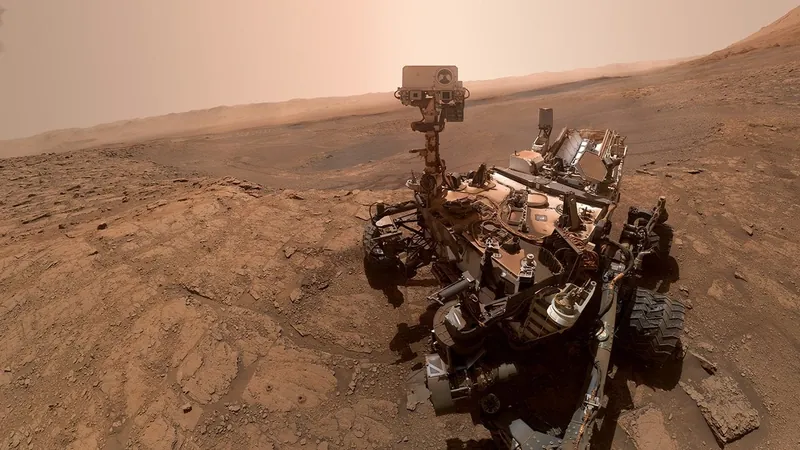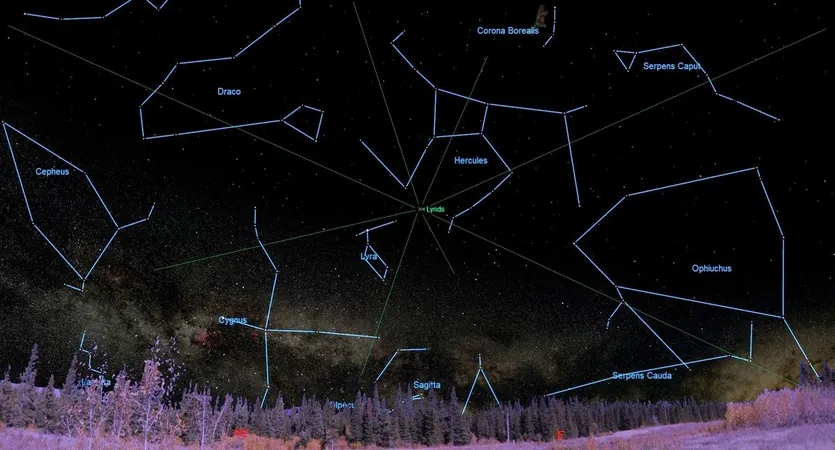
Major Breakthrough! Curiosity Rover Uncovers Largest Organic Molecules on Mars
2025-04-04
Author: Liam
In an extraordinary discovery, NASA's Curiosity rover has detected the largest organic molecules yet found on Mars, intensifying intrigue about the planet's potential for harboring life. Although these organic compounds can originate from both biological and geological processes, their existence signals the presence of complex chemical evolution on the Red Planet, raising new questions about its former environments and history.
Unlocking Nature's Secrets: The Organic Molecules
The recently identified organic molecules include decane, undecane, and dodecane, each characterized by its respective number of carbon atoms (10, 11, and 12). These compounds may derive from even larger, intricate carboxylic molecules, which are vital constituents in the cellular architecture of living organisms. However, the analytical tools on Curiosity, specifically its Sample Analysis on Mars (SAM) suite, are unable to characterize such large structures fully.
Curiosity made this groundbreaking finding in 2013 while drilling into a rock named Cumberland, located in Yellowknife Bay within the Gale Crater. This area is presumed to have been an ancient lakebed, with sedimentary layers capturing a wealth of Mars’ geological history. The Cumberland sample has undergone extensive analysis multiple times, utilizing the gas chromatograph mass spectrometer onboard to identify its chemical composition.
In a landmark moment for Martian research, this sample previously yielded chlorobenzene—the very first organic molecule detected on Mars, unveiled by Caroline Freissinet from the French National Centre for Scientific Research. The recent publication of these newfound larger molecules in the Proceedings of the National Academy of Sciences by Freissinet and her team adds another significant chapter to our quest for understanding Mars.
A Complex Past Unfolds
Larger organic molecules are typically fragile, vulnerable to destruction from radiation and extreme heat. Nevertheless, their discovery suggests a more complex form of chemistry has unfolded on Mars than previously thought. Research demonstrates that ancient Mars had environments capable of generating these intricate compounds, whether through natural chemical processes or possibly even biological activities.
While researchers debate the timeline of Mars' transition from a wet, Earth-like planet to its current arid state, evidence piles up that supports the idea that complicated molecular structures existed in its early history. The discovery of these large molecules highlights that Curiosity's prior findings of a wet Mars were perhaps just the tip of the iceberg.
The implications of this discovery are fantastic. As noted by Amy Williams, an associate professor at the University of Florida, the presence of these molecules may suggest delivery via carbon-rich meteorites or through ancient hydrothermal vents. Importantly, the characteristics of the molecules straddle the domains of both abiotic and biotic origins. This duality challenges scientists to rethink the environmental conditions on Mars that may have allowed for both types of chemistry to coexist.
The Future of Mars Exploration
Crucially, if Curiosity was able to pinpoint these unexpected large molecules, similar or even more complex organic compounds may still be awaiting discovery on Mars. The fact that these molecules survived radiation and harsh conditions over approximately 3.7 billion years of history raises hopes that biosignatures from ancient microbial life may also exist yet undiscovered.
Before Curiosity commenced its search for organic compounds in Gale Crater in 2013, there was no conclusive evidence of indigenous organic carbon on Mars. The ongoing research is illuminating a more diversified and intricate molecular landscape that invites further exploration.
Dr. Freissinet recently stated, “Our study illustrates that by analyzing Martian samples, we can identify chemical signatures of past life, should it have ever existed.” Meanwhile, NASA is keenly preparing for the return of Mars samples to Earth in the 2030s, which promises to enhance our understanding of the planet's history and possibly confirm if life ever thrived on our neighboring world.
The journey into Mars' past is far from over, and with each discovery, we edge closer to answering one of humanity's most profound questions: Is there, or was there ever, life beyond our Earth? Stay tuned as we uncover more secrets from the Red Planet!









 Brasil (PT)
Brasil (PT)
 Canada (EN)
Canada (EN)
 Chile (ES)
Chile (ES)
 Česko (CS)
Česko (CS)
 대한민국 (KO)
대한민국 (KO)
 España (ES)
España (ES)
 France (FR)
France (FR)
 Hong Kong (EN)
Hong Kong (EN)
 Italia (IT)
Italia (IT)
 日本 (JA)
日本 (JA)
 Magyarország (HU)
Magyarország (HU)
 Norge (NO)
Norge (NO)
 Polska (PL)
Polska (PL)
 Schweiz (DE)
Schweiz (DE)
 Singapore (EN)
Singapore (EN)
 Sverige (SV)
Sverige (SV)
 Suomi (FI)
Suomi (FI)
 Türkiye (TR)
Türkiye (TR)
 الإمارات العربية المتحدة (AR)
الإمارات العربية المتحدة (AR)